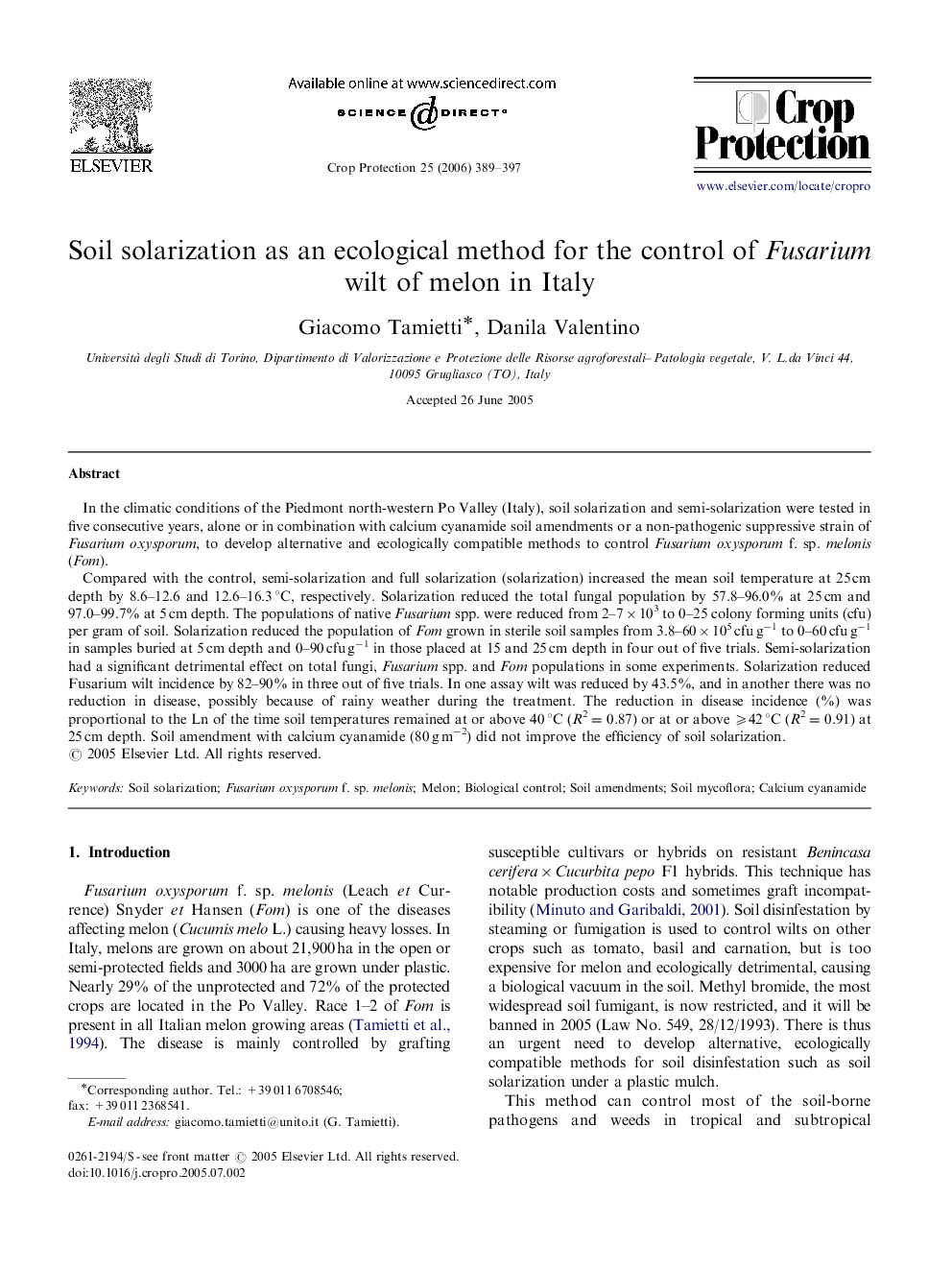| Article ID | Journal | Published Year | Pages | File Type |
|---|---|---|---|---|
| 4507371 | Crop Protection | 2006 | 9 Pages |
In the climatic conditions of the Piedmont north-western Po Valley (Italy), soil solarization and semi-solarization were tested in five consecutive years, alone or in combination with calcium cyanamide soil amendments or a non-pathogenic suppressive strain of Fusarium oxysporum, to develop alternative and ecologically compatible methods to control Fusarium oxysporum f. sp. melonis (Fom).Compared with the control, semi-solarization and full solarization (solarization) increased the mean soil temperature at 25 cm depth by 8.6–12.6 and 12.6–16.3 °C, respectively. Solarization reduced the total fungal population by 57.8–96.0% at 25 cm and 97.0–99.7% at 5 cm depth. The populations of native Fusarium spp. were reduced from 2–7×103 to 0–25 colony forming units (cfu) per gram of soil. Solarization reduced the population of Fom grown in sterile soil samples from 3.8–60×105 cfu g−1 to 0–60 cfu g−1 in samples buried at 5 cm depth and 0–90 cfu g−1 in those placed at 15 and 25 cm depth in four out of five trials. Semi-solarization had a significant detrimental effect on total fungi, Fusarium spp. and Fom populations in some experiments. Solarization reduced Fusarium wilt incidence by 82–90% in three out of five trials. In one assay wilt was reduced by 43.5%, and in another there was no reduction in disease, possibly because of rainy weather during the treatment. The reduction in disease incidence (%) was proportional to the Ln of the time soil temperatures remained at or above 40 °C (R2=0.87) or at or above ⩾42 °C (R2=0.91) at 25 cm depth. Soil amendment with calcium cyanamide (80 g m−2) did not improve the efficiency of soil solarization.
